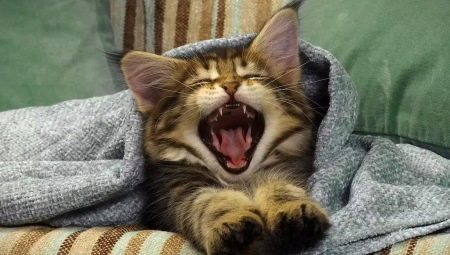The issue of tooth change in kittens is important, since this process has a significant impact on the health of animals in adolescence and gives them significant discomfort. It is necessary to consider this topic in order to know the peculiarities of caring for a pet in a difficult period of its life and in time to solve problems that may arise as a result of this phenomenon.
Do cats have milk teeth?
When kittens are born, then, like other animals, at first they have no teeth. The first teeth they begin to erupt at about 13-14 days after birth and are distinguished by an unusual structure and sharpness. By the end of the first month, milk fangs appear. They are replaced by constants around the fifth month of life.
In total, the kitten has 26 milk teeth in its mouth, which usually form by the second month of life:
- 4 fangs;
- 10 indigenous;
- 12 incisors.
Somewhere from the third month of life, they are replaced by permanent ones. 4 new molars also appear. Kittens are completely bite for about 7-8 months, although it is possible to increase this period to 9 months. In general, the growth and change of teeth in cats and cats ends in about a year.
Note that permanent teeth look different. They are more massive, their enamel is very quickly coated with a yellow or cream tint.
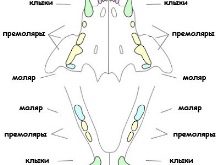
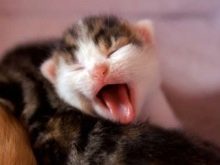
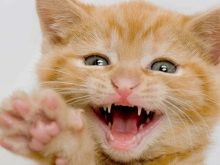
Symptoms of prolapse
It often happens that the owners do not notice the change of teeth in the pet, since normally the process occurs in the absence of pain. Owners of the baby can only guess about it after finding the fallen milk tooth.
But there are a number of symptoms that often accompany the described phenomenon.
- During this period, an unpleasant smell often appears from the mouth, which the owners of the animal attribute to improper nutrition. Usually, after the completion of the tooth change, this symptom disappears by itself.
- The animal may begin to feel discomfort, which will cause a change in its behavior. Due to a slight increase in temperature, chills often appear, so the kitten will try to spend more time at the heat source, which is usually the owner. There have been cases when pets even crawled under the covers, although they hadn’t done this before.
- At this time, the kitten is trying to try on the tooth and chew. So he tries to get rid of a staggering tooth, which prevents him.
- Animals begin to mark territory.
- Gum inflammation can occur, which can even lead to a refusal of food for a day or two. If this does not work, then it is best to consult a veterinarian.
- If the kitten has a loose tooth, the pet may shake its head, lick its lips or try to get rid of the source of anxiety with its paw. Should not interfere with him in this case.
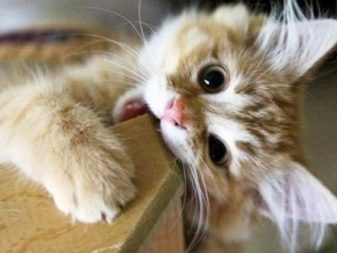
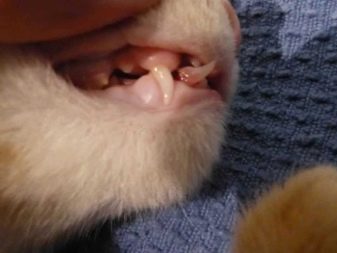
It is worth making sure that the animal does not swallow a tooth that has fallen out during a meal.
If this still happens, then usually nothing bad happens, since the tooth comes out naturally. But it can get stuck in the intestines (albeit in rare cases), which will cause pain and discomfort and will certainly affect the behavior of the pet. Then you need to contact a specialist.
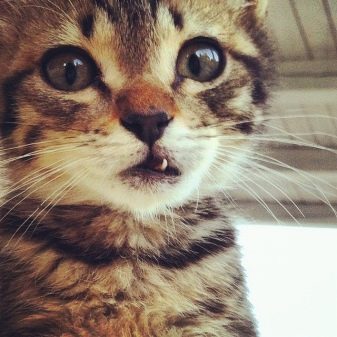
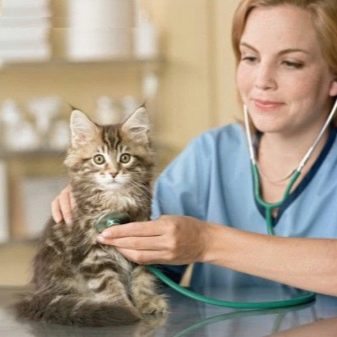
How many times do they change?
Cats change teeth only once in a lifetime. In total, these animals have 30. As long as the pet is at the age of the kitten, it has 26 teeth. With normal development, the end of the shift process takes about 7-8 months of life. Permanent incisors in a baby appear somewhere in 3-4 months, fangs, premolars and molars grow in 4-6 months of life.

Features of tooth changes in different breeds
In kittens of different breeds, development can occur in different ways, including the course of various processes in the body. This also applies to tooth changes.
For example, kittens Scottish and British breeds development takes place according to common standards. Teeth change starts somewhere on the 4th month of life. One of the features of precisely these breeds will be that under the deciduous teeth, which are not even staggering, the growth of constants may begin. Most at risk are fangs and incisors.
If the baby begins to inflame paradental tissue or the remnants of the primary type of teeth with new ones, you should consult a doctor.
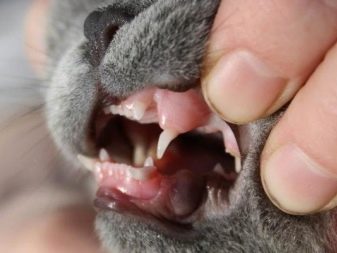
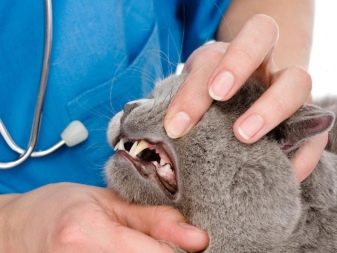
If we talk about kittens Thai and Siamese breeds, then you should pay special attention to fangs, because their sizes in these cats differ from the thickness and length of other teeth. And they grow a little slower. It should be observed that as new teeth grow, old ones fall out. In Siamese babies, the fangs from above and below change even before the age of 1.5 months. If suddenly the milk fang has fallen out, and the new one has not yet begun to grow, you should not worry, as it will erupt when necessary.
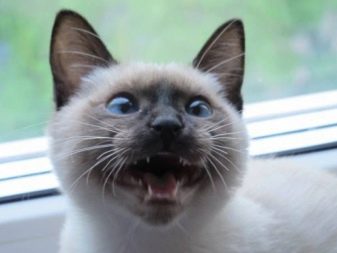
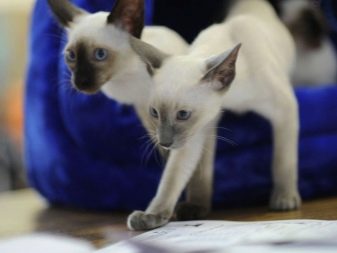
At Siberian kittens teeth change at the same time as other breeds.
If for some reason there is a delay in this matter, then this indicates that the pet's diet should be more balanced.
For some members of the breed, tooth changes may be delayed. for a period of up to 1 month.
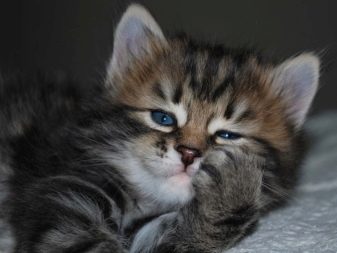
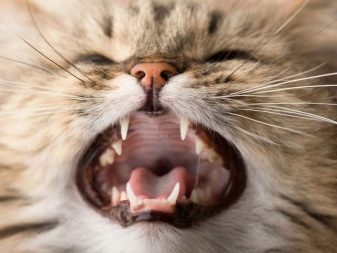
In sphinx babies, teeth are changed at the age of 3-6 months. One of the features of this breed is a delay in the prolapse and growth of new fangs. Until milk teeth fall out, new ones will not begin to appear. Veterinarians note that there have been cases of the growth of milk fangs only by the year of life. The owner of such a cat should follow the process of changing her teeth especially carefully.
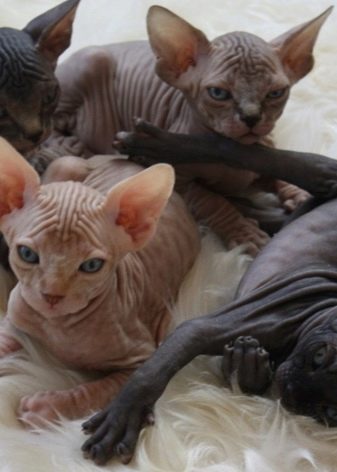

If we talk about this process, Maine Coon, then they often have problems. Firstly, the teeth change period here stretched to 8 months of age. Although it is believed that only at 1 year and 3 months the Maine Coon kitten can be considered an adult. Molar teeth can grow up to 12 months of age. It is important to watch that they are located in parallel.
The correct bite in cats of this breed will be in the form of scissors.
Such pets should buy more toys so that they have something to chew on and thus scratch the gums.
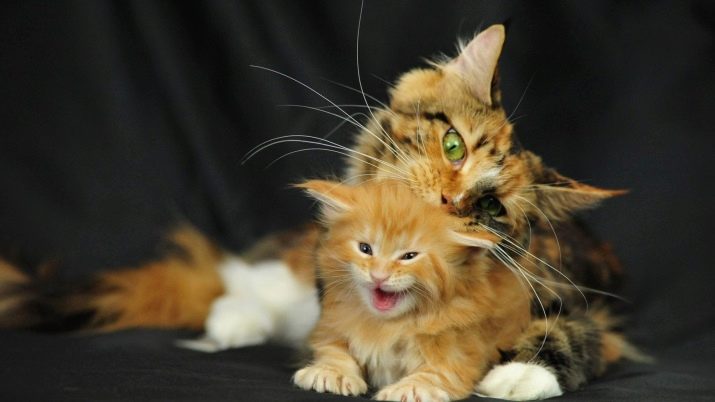
Baby teeth bengal cat start to change at 5 months of age. Sometimes they fall out too quickly, but such cases are rare and are usually explained by some kind of genetic abnormality. That is, a situation is possible when milk teeth fall out, and permanent ones do not erupt yet. By six months, they usually appear, but if suddenly this does not happen, then the reason may be a lack of vitamins and minerals in the baby's body. Another indicator of vitamin deficiency can serve as a problem with the coat. Then it will be better to consult a veterinarian.
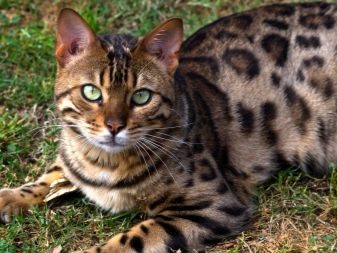
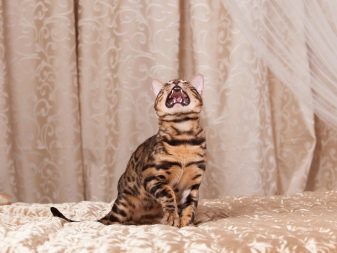
Animal Care Rules
Kittens that have a tooth change process should be looked after especially carefully. After all, it often happens that the process goes differently than the rest of the cats. During this period, nutrition should be special, the food of the animal should be rich in elements such as phosphorus and calcium.
It is the lack of these substances that causes softening of the tissues of permanent teeth and entails further destruction of the dentition. This can also cause uneven tooth growth, which can negatively affect the chewing of food and complicate the process of digestion. Such troubles can be avoided by purchasing special supplements containing a whole complex of minerals and vitamins.
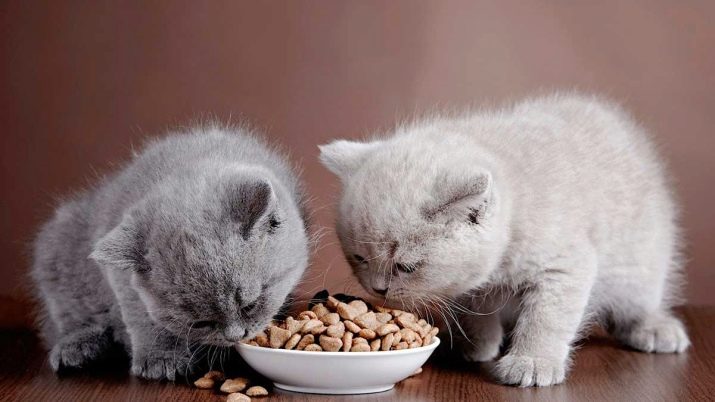
Do not be surprised if your pet eats little during this period. He has a source of discomfort in his mouth that makes it difficult for him to chew.
If the refusal of food lasts more than a day, you should show the animal to the veterinarian in order to prevent the occurrence of any more serious health problems. After all, it is known that fasting for more than two days can adversely affect the cat’s gastrointestinal tract.
A healthy kitten, which has no problems other than changing teeth, is unlikely to refuse food more than once. He can eat if he even feels some toothache. Only a serious illness can cause a prolonged refusal of food.
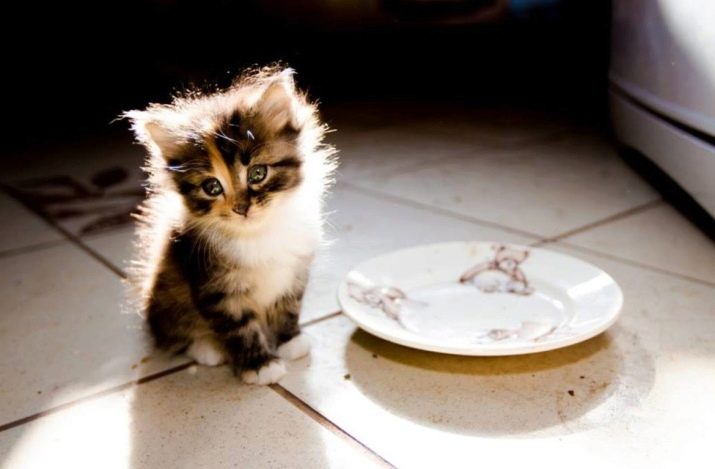
Another important point is proper care, which involves attention and care from the owner, as well as an adequate reaction to the behavior of the baby. You should not let him gnaw on various objects so that he does not swallow some kind of breakaway piece. This can cause intestinal obstruction, which will entail the cost of an expensive operation, or even result in the death of the pet. Do not let the kitten gnaw at the owner’s hands or feet, because a habit can remain in the future and an animal with already permanent teeth can cause a person a lot of trouble and discomfort.
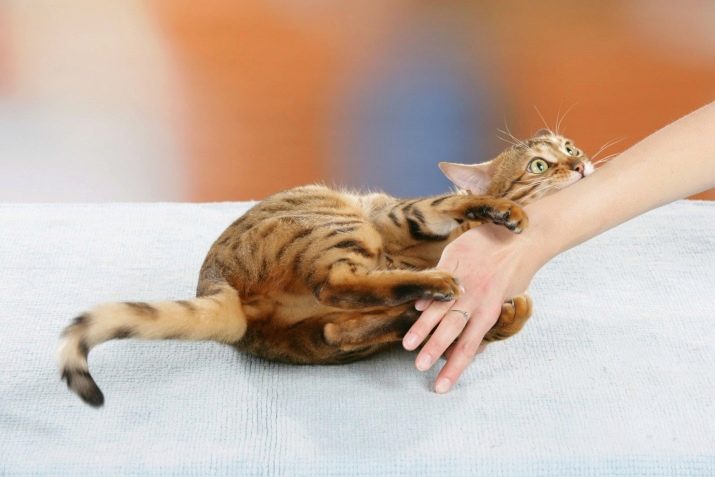
It is equally important during the change of teeth to monitor the hygiene of the oral cavity of the pet. An animal should be accustomed to it from childhood, so that even when it is an adult, this question does not arise. It’s better to start with some games so that the baby gets used to a special toothbrush and is not afraid of it. Yes, your kitten will be glad to scratch his gums a bit, especially during the period of teeth change. The main thing in this matter is regularity, so that a strong habit is formed. This will further avoid tartar, gum disease, as well as periodontitis and other dental diseases.
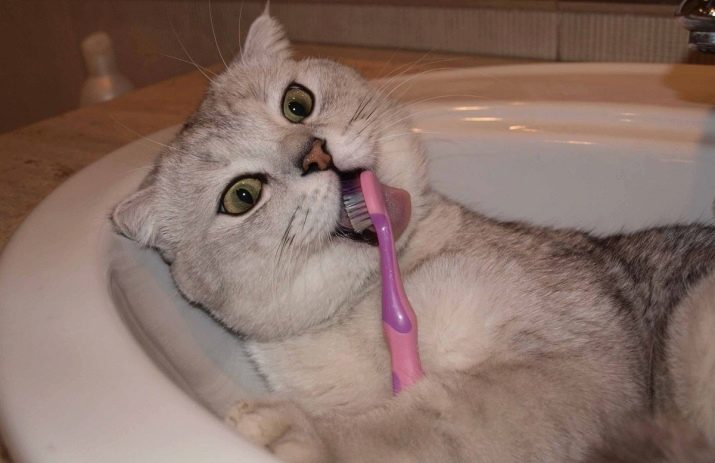
Possible problems
A change of teeth does not always go well and painlessly for a kitten. Often this process can be accompanied by complications and require the intervention of a specialist. The most common problems are:
- very severe gum disease;
- suppuration of the wound in the place where the tooth fell out;
- refusal of food for more than two days;
- the animal is very restless or vice versa lethargic;
- some of the teeth remained, although in some places the permanent ones grew;
- milk teeth fell out, but not new.
In these cases, you should definitely contact your veterinarian. But even if the animal is healthy, it will not be superfluous to simply have an examination with a specialist for prophylactic purposes in order to monitor the process under consideration.
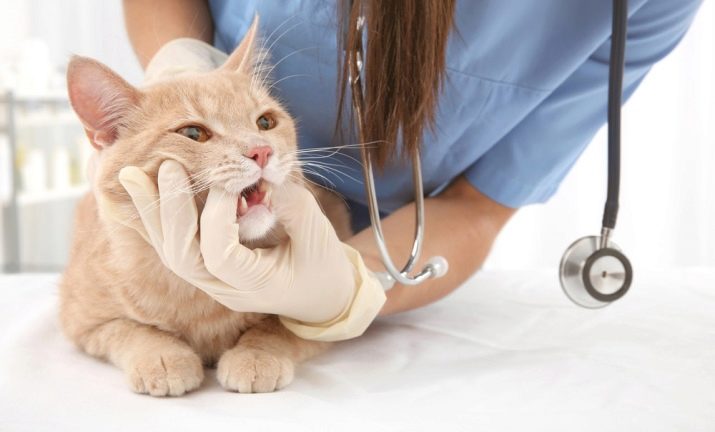
Now let's say a little more about each case. Gum disease is one of the most common complications. Its signs are:
- kitten anxiety;
- attempts to chew food longer;
- refusal of food;
- rubbing the face against various objects to relieve pain;
- profuse salivation;
- swelling of the muzzle.
Slight inflammation is normal., but if it has become too strong and causes the animal serious discomfort, then you should definitely contact your veterinarian.
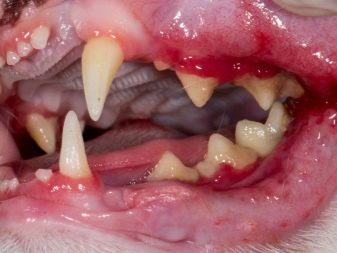

Another fairly common problem is stuck baby teeth. It is much more serious and represents residual deciduous teeth that do not fall out until the molar already grows from the gums. Due to its improper growth, the bite may be impaired, which will cause a high injury to the cat's lips, cheeks and gums. If the milk tooth has not fallen out, but the molar tooth has already grown in its place, you should consult a doctor.
Two common options for the problem:
- there are loose teeth with active growth of molars;
- some of the deciduous teeth have not fallen out after 6 months of life.
Only a veterinarian should deal with this case, as it often happens that this problem can be solved only with the help of surgical intervention under anesthesia. This operation is performed when milk teeth cannot fall out on their own.

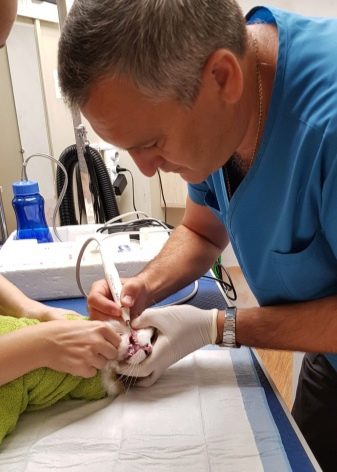
Any pet requires a careful and caring attitude to itself from the very first days of life to the onset of venerable age. But each pet has moments when it needs special attention and care. One of such periods is just the time of the change of teeth, after which the baby begins an adult life. That is why it is important to know how this process occurs, how to care for a kitten and what to do in case of any complications or health problems.
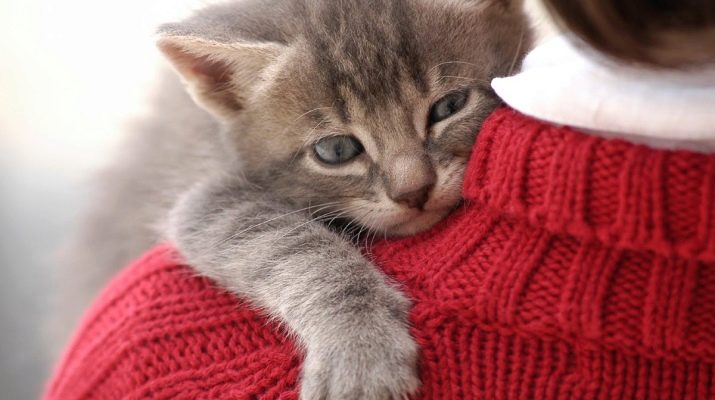
In the next video, you will be able to observe the characteristic behavior of a kitten whose teeth are being cut.
